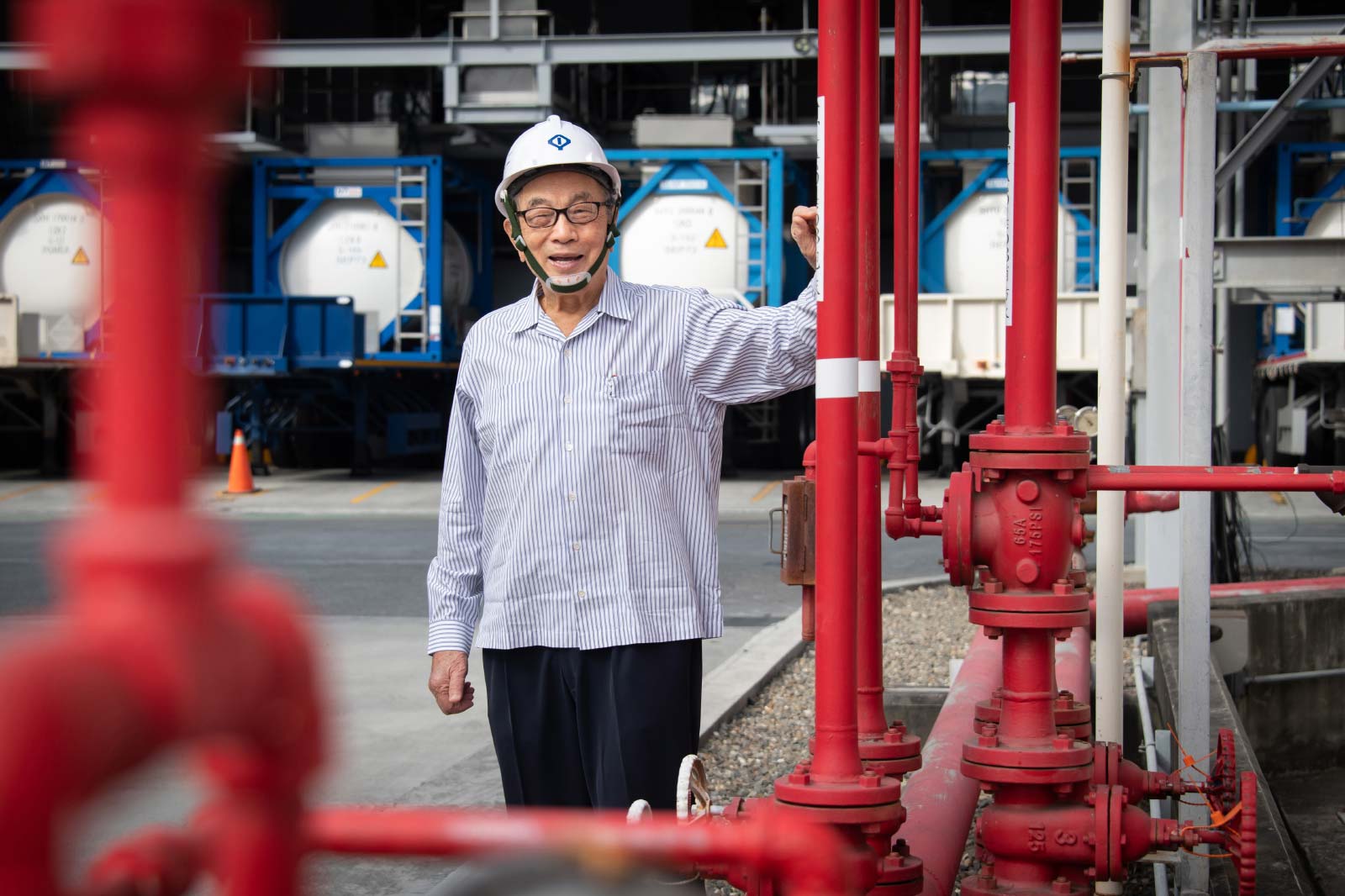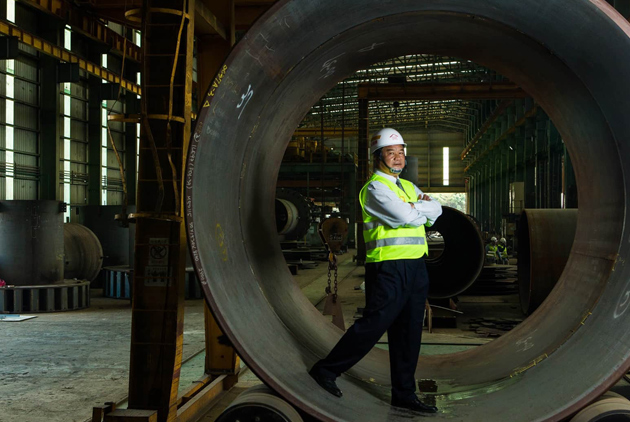2019 CommonWealth Greater China Top 1000 Survey
China No Longer Experiencing Wild Growth

Source:Justin Wu/CW
The 2019 CommonWealth Greater China Top 1000 Survey is out, indicating that Chinese enterprises have said goodbye to the “wild growth” era. Does this mean opportunities for Taiwanese enterprises to embrace China’s new era of openness?
Views
China No Longer Experiencing Wild Growth
By CommonWealth Magazineweb only
The results of the 2019 CommonWealth Greater China Top 1000 Survey are out, and Hon Hai Precision remains in fifth place with annual revenue of NT$5.29 trillion, also maintaining its position as the top privately owned and operated business in the Greater China region. (Read: What Happens to Hon Hai if Terry Gou Runs for President?)
The top four enterprises are all Chinese state-run enterprises, namely Sinopec (NT$13.13 trillion), China National Petroleum Corporation (NT$10.69 trillion), China State Construction Engineering (NT$5.44 trillion), and the Industrial and Commercial Bank of China (NT$5.3 trillion).
Including Hon Hai, this year a total of 120 Taiwanese enterprises made the rankings, marking a new low since CommonWealth began the survey in 2007.
But don’t panic; compared to last year’s 124 companies, a drop of four companies is the lowest to date, and much better than last year’s loss of 15 enterprises from the rankings.
Four Major Findings of This Year’s Survey:
Discovery 1: Chinese Enterprises Reaching the End of ‘Wild Growth’ Phase
As the proportion of PRC-based enterprises on the list continues to climb, so did the threshold for inclusion in the rankings of the Greater China Top 1000 reach a new high, at NT$45.726 billion. This represents a rise of nearly NT$5 billion over last year’s NT$40.673 billion scale, although overall growth is showing signs of losing momentum.
Since rumblings of the U.S.-China trade tensions surfaced last March, heralding a stormy year on the horizon, this year the average revenue growth for the top 1000 enterprises in the Greater China region was 9.93 percent, showing a distinct gap from the 20-percent level of the previous year.
Have you read?
♦ Taiwan, Unexpected Beneficiary of US-China Trade War
♦ China’s IC Ambitions: Big Money ≠ A Second TSMC
♦ Anti-Huawei Campaigns, Chance or Crisis?
Profitability also took a hit. This year the companies in the ranking showed an average of 7.78 percent profitability, the lowest level in three years, with last year’s at 8.38 percent.
Meanwhile, the number of enterprises that lost money nearly doubled over last year. This year, a total of 65 corporations on our list operated in the red, far more than last year’s 33.
Discovery 2: China’s ‘First Year of the Tech IPO’
Among this year’s top 1000 enterprises in the Greater China region, the two with the highest annual revenue growth rate were the I Love My Home Holding Company Group (710.91 percent) and Pinduoduo (652.26 percent). The former is China’s second-largest real estate brokerage, while the latter is a social e-commerce platform second only to Taobao (China’s version of eBay) in number of registered users.
One thing the two aforementioned companies have in common is that they were listed on the stock exchange last year. I love My Home achieved a backdoor listing on the Shenzhen A Share Exchange via the asset restructuring of a Kunming department store commercial property company. Pinduoduo was listed in the United States, achieving market valuation of nearly US$30 billion on the day of its IPO.
Last year 165 “Chinese concept stocks,” including Xiaomi, iQiyi, and Pinduoduo, held IPOs on the U.S. and Hong Kong stock exchanges. This major contingent makes it “the first year of the Chinese tech IPO” and provides the most important momentum for growth.
Discovery 3: Cross-strait ‘Rich Dad’ Phenomenon
Among the top 1000 firms included in the survey, five Taiwanese enterprises made the list of the 50 companies with the fastest revenue growth rate.
Among these, China Development Financial Holdings (at 195.44 percent) represents the financial sector, while Yageo (at 139.18 percent) and Walsin Technology (at 120.63 percent) benefitted from a major shortage in passive components supplies, while Wiwynn (at 111.34 percent) and Ennoconn (at 97.58 percent), with the support of mother corporations Wistron and Hon Hai, respectively, were boosted to sparkling results last year by the cloud services and industrial Internet sectors. (Read: CommonWealth Taiwan Top 2000 Survey: Apple’s Souring - How’s Manufacturing Transitioning?)
In contrast to the “rich dads” among Taiwanese enterprises largely retaining interests in manufacturing, more growth opportunities across the strait came from the Internet industry. Especially among the “unicorns” (startup companies with valuations exceeding US$1 billion) that have emerged in China in recent years, they are often backed by China’s Internet giants Baidu, Alibaba, or Tencent.
In fact, three companies under the Tencent umbrella made the top 50 fastest revenue growth list, namely Pinduoduo (652.26 percent), Meituan Dianping (92.25 percent), and the Tencent Music Entertainment Group (72.89 percent).
The rising star effect also helped parent company Tencent achieve a prominent place on this year’s Greater China ranking. Tencent, whose rise in the region has been steady and steep in recent years, ranks number 36 this year, not only achieving a 31.52 percent revenue growth rate, but appearing on the list of 50 most profitable companies for the fifth year in a row.
Notably, Tencent’s after-tax profits three years ago were under NT$180 billion, still far behind that of “most profitable Taiwanese enterprise” TSMC at around NT$330 billion. However, this year Tencent recorded a figure of NT$357.6 billion, outranking TSMC (NT$351.1 billion) on the 50 Most Profitable Enterprises list.
Discovery 4: US-China Trade War Spells Opportunities for Taiwan
Forty years ago, China’s opening and reform offered Taiwanese enterprises opportunities for rapid growth. Today, at a time when growth opportunities for Taiwanese enterprises appear limited, China also happens to face the momentous challenges of the U.S.-China trade war.
Upon interviewing a multitude of scholars and experts for our 2019 CommonWealth Greater China Top 1000 Survey, we found that no matter how trade negotiations pan out between the U.S. and China, China is surely on the verge of a new “second opening” era.
Whether Taiwanese enterprises can seize the opportunities at hand will go far in determining the composition of the Greater China Top 1000 rankings in the future.
Translated by David Toman
Edited by Sharon Tseng







